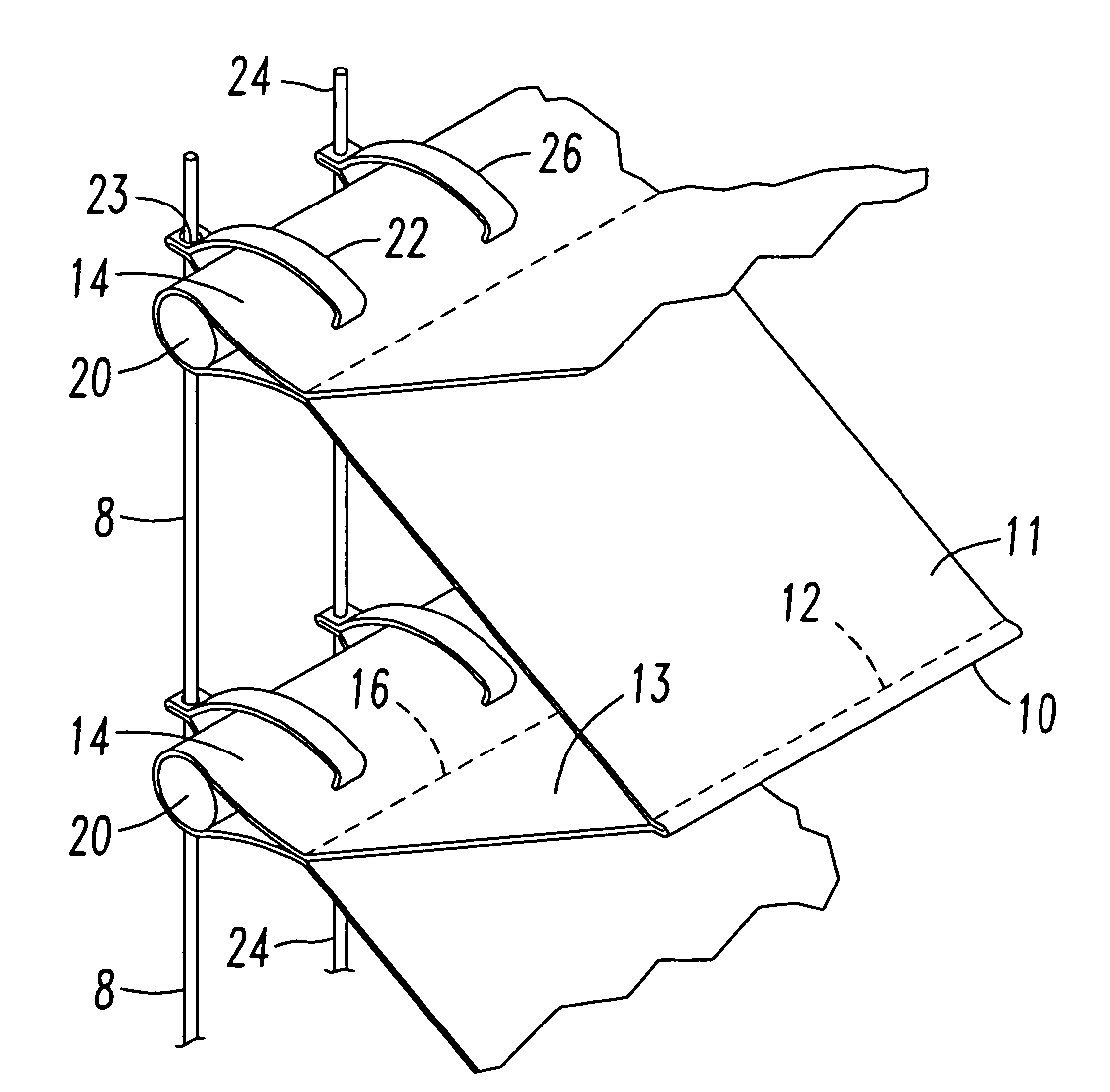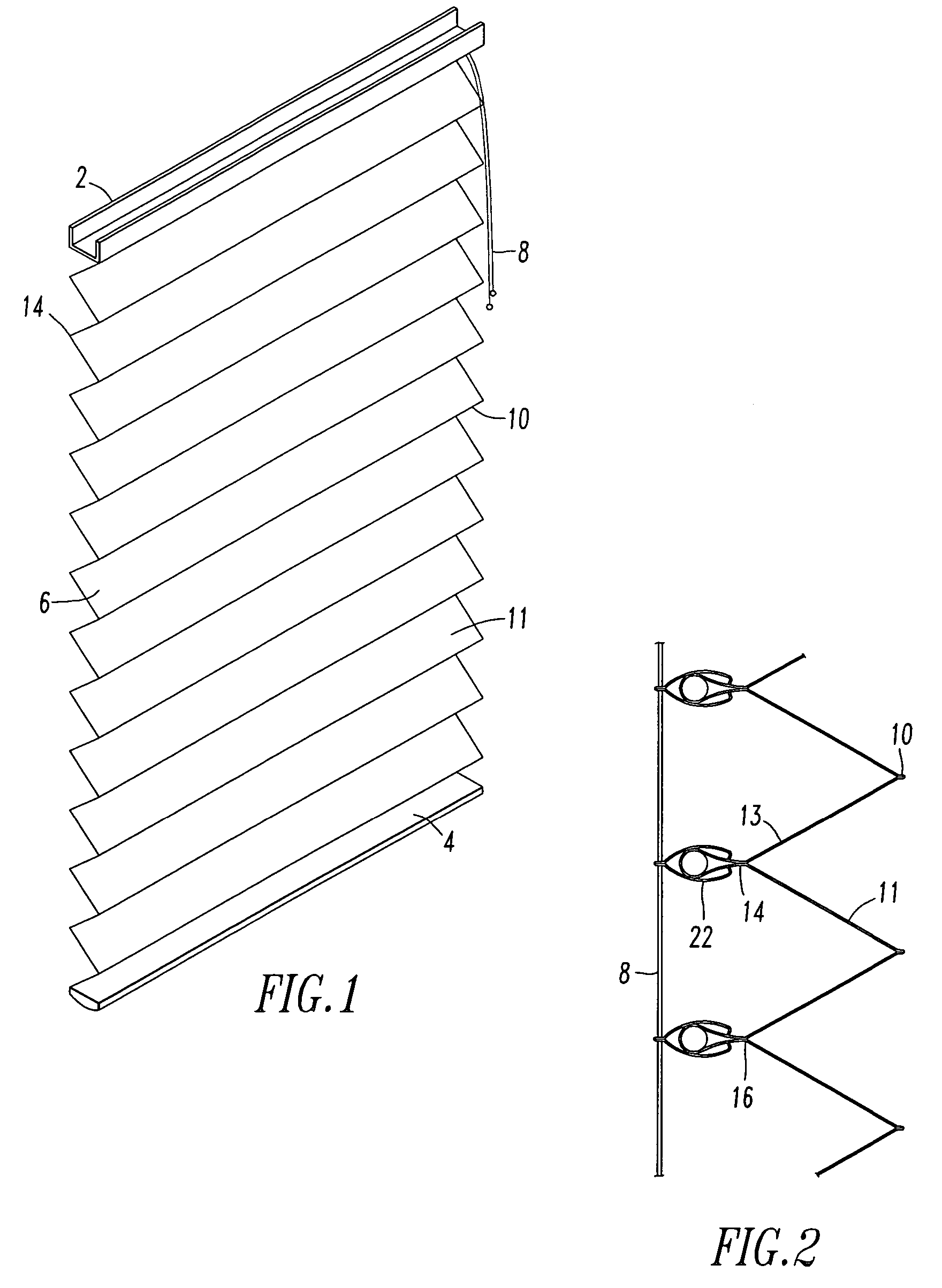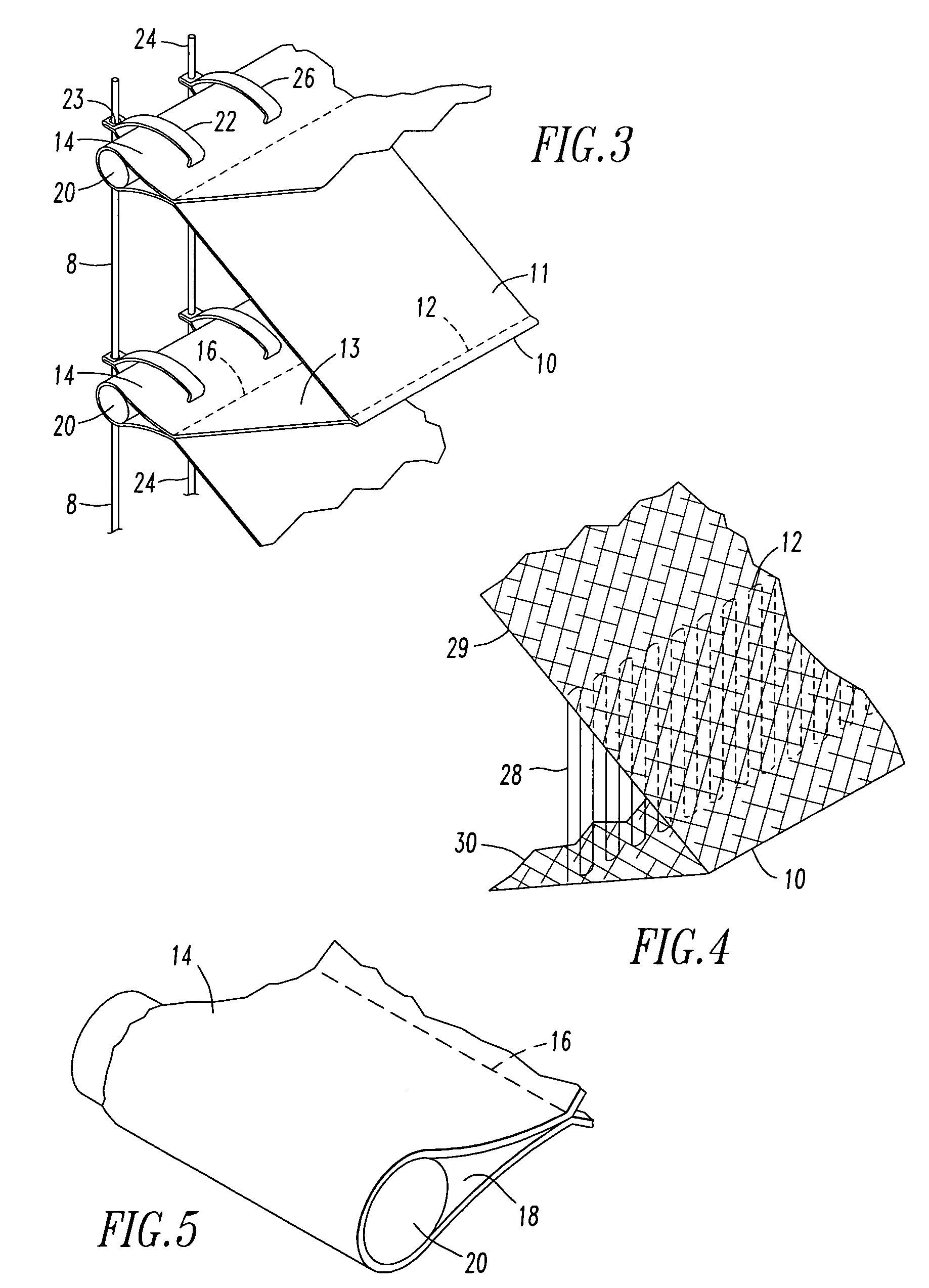Pleated shade with sewn in pleats
a pleat and shade technology, applied in the field of pleats, can solve problems such as difficulty in pleating
- Summary
- Abstract
- Description
- Claims
- Application Information
AI Technical Summary
Problems solved by technology
Method used
Image
Examples
Embodiment Construction
[0015]A first present preferred embodiment of my pleated shade with sewn in pleats, shown in FIGS. 1 through 5, has a panel of pleated material 6 extending between a headrail 2 and bottomrail 4. Lift cords 8 extend from the bottomrail into and through the headrail. As can be seen most clearly in FIGS. 2 and 3, a series of front pleats 10 extend outward from the front surface 11 of the panel of material 6. A front seam 12 is sewn into the panel of material 6 to form the front pleats. I prefer that the seam be positioned so that there is not more than one sixteenth of an inch of material between the seam and the fold at the outermost portion of the pleat. A tight seam may create a small tab of about one sixteenth of an inch or less that is imperceptible when the shade is viewed from a distance of at few feet. Such a small tab will appear to be a fold rather than a tab when the shade is hung on a window and seen from a distance. In many fabrics the number of threads within the small ta...
PUM
 Login to View More
Login to View More Abstract
Description
Claims
Application Information
 Login to View More
Login to View More - R&D
- Intellectual Property
- Life Sciences
- Materials
- Tech Scout
- Unparalleled Data Quality
- Higher Quality Content
- 60% Fewer Hallucinations
Browse by: Latest US Patents, China's latest patents, Technical Efficacy Thesaurus, Application Domain, Technology Topic, Popular Technical Reports.
© 2025 PatSnap. All rights reserved.Legal|Privacy policy|Modern Slavery Act Transparency Statement|Sitemap|About US| Contact US: help@patsnap.com



